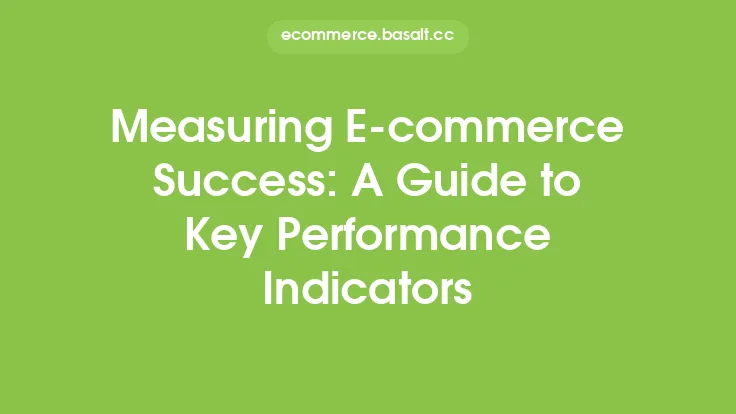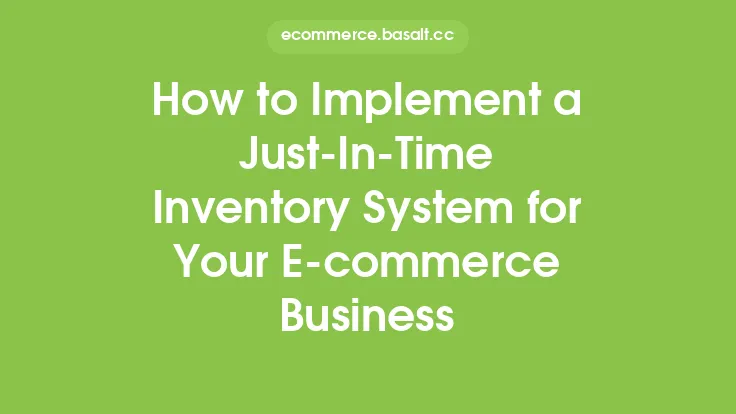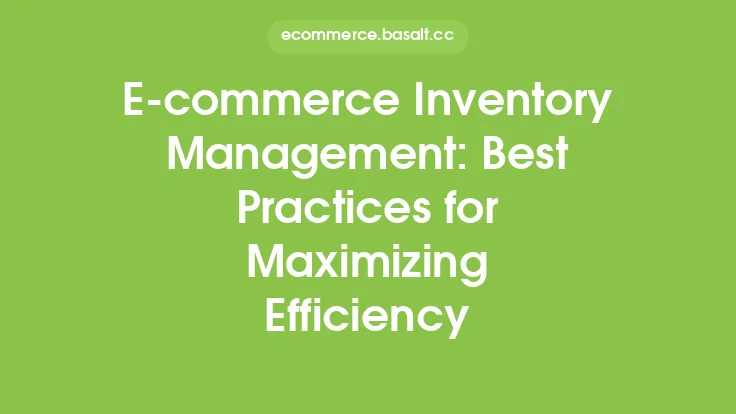Inventory turnover is a crucial metric for e-commerce businesses, as it directly impacts their profitability, cash flow, and overall success. It measures how quickly a company sells and replaces its inventory, providing insights into the efficiency of its inventory management, product demand, and pricing strategies. In this article, we will delve into the concept of inventory turnover, its calculation, and its significance in the e-commerce industry.
What is Inventory Turnover?
Inventory turnover, also known as inventory turns, is a financial metric that calculates the number of times a company sells and replaces its inventory within a given period, typically a year. It is an essential indicator of a company's ability to manage its inventory levels, meet customer demand, and maintain a healthy cash flow. A high inventory turnover rate indicates that a company is selling its products quickly and efficiently, while a low rate may suggest overstocking, poor demand, or inefficient inventory management.
Calculating Inventory Turnover
The inventory turnover ratio is calculated by dividing the cost of goods sold (COGS) by the average inventory value. The formula is as follows:
Inventory Turnover = Cost of Goods Sold / Average Inventory Value
Where:
- Cost of Goods Sold (COGS) is the total cost of producing and selling the company's products, including direct labor, materials, and overhead costs.
- Average Inventory Value is the average value of the company's inventory over a given period, usually a year.
For example, if a company has a COGS of $100,000 and an average inventory value of $20,000, its inventory turnover ratio would be:
Inventory Turnover = $100,000 / $20,000 = 5
This means that the company sells and replaces its inventory five times within a year.
Importance of Inventory Turnover in E-commerce
Inventory turnover is a vital metric for e-commerce businesses, as it has a direct impact on their profitability, cash flow, and competitiveness. Here are some reasons why inventory turnover is essential in e-commerce:
- Cash Flow Management: A high inventory turnover rate indicates that a company is selling its products quickly, which means it can recover its inventory costs faster and maintain a healthy cash flow.
- Inventory Management: Inventory turnover helps companies identify slow-moving products, overstocking, and understocking issues, enabling them to optimize their inventory levels and reduce waste.
- Product Demand: Inventory turnover provides insights into product demand, helping companies to identify best-selling products and adjust their production and pricing strategies accordingly.
- Competitiveness: A high inventory turnover rate can be a competitive advantage, as it enables companies to respond quickly to changes in demand and stay ahead of their competitors.
Factors Affecting Inventory Turnover
Several factors can affect a company's inventory turnover rate, including:
- Product Seasonality: Seasonal products may have a lower inventory turnover rate during off-peak seasons.
- Product Life Cycle: New products may have a higher inventory turnover rate, while mature products may have a lower rate.
- Pricing Strategies: Pricing strategies, such as discounts and promotions, can impact inventory turnover rates.
- Inventory Management Practices: Effective inventory management practices, such as just-in-time inventory and drop shipping, can improve inventory turnover rates.
- Supply Chain Efficiency: Efficient supply chain management can reduce lead times and improve inventory turnover rates.
Improving Inventory Turnover
To improve inventory turnover, e-commerce businesses can implement several strategies, including:
- Optimizing Inventory Levels: Companies can use data analytics and forecasting tools to optimize their inventory levels and reduce overstocking and understocking.
- Improving Supply Chain Efficiency: Companies can streamline their supply chain operations to reduce lead times and improve inventory turnover rates.
- Implementing Just-in-Time Inventory: Companies can adopt just-in-time inventory practices to reduce inventory holding costs and improve inventory turnover rates.
- Offering Discounts and Promotions: Companies can offer discounts and promotions to clear out slow-moving inventory and improve inventory turnover rates.
- Conducting Regular Inventory Audits: Companies can conduct regular inventory audits to identify slow-moving products and optimize their inventory levels.
Conclusion
Inventory turnover is a critical metric for e-commerce businesses, as it provides insights into their inventory management, product demand, and pricing strategies. By understanding the concept of inventory turnover, calculating it accurately, and implementing strategies to improve it, e-commerce businesses can optimize their inventory levels, reduce waste, and improve their profitability and competitiveness. As the e-commerce industry continues to evolve, inventory turnover will remain a vital metric for businesses to measure their success and make informed decisions about their inventory management practices.





